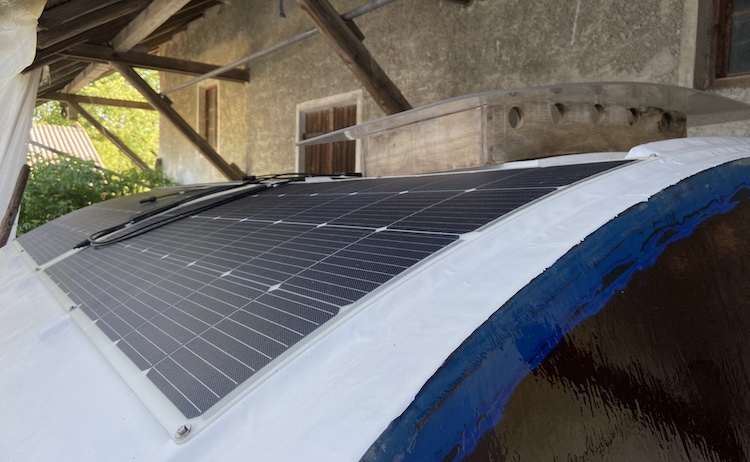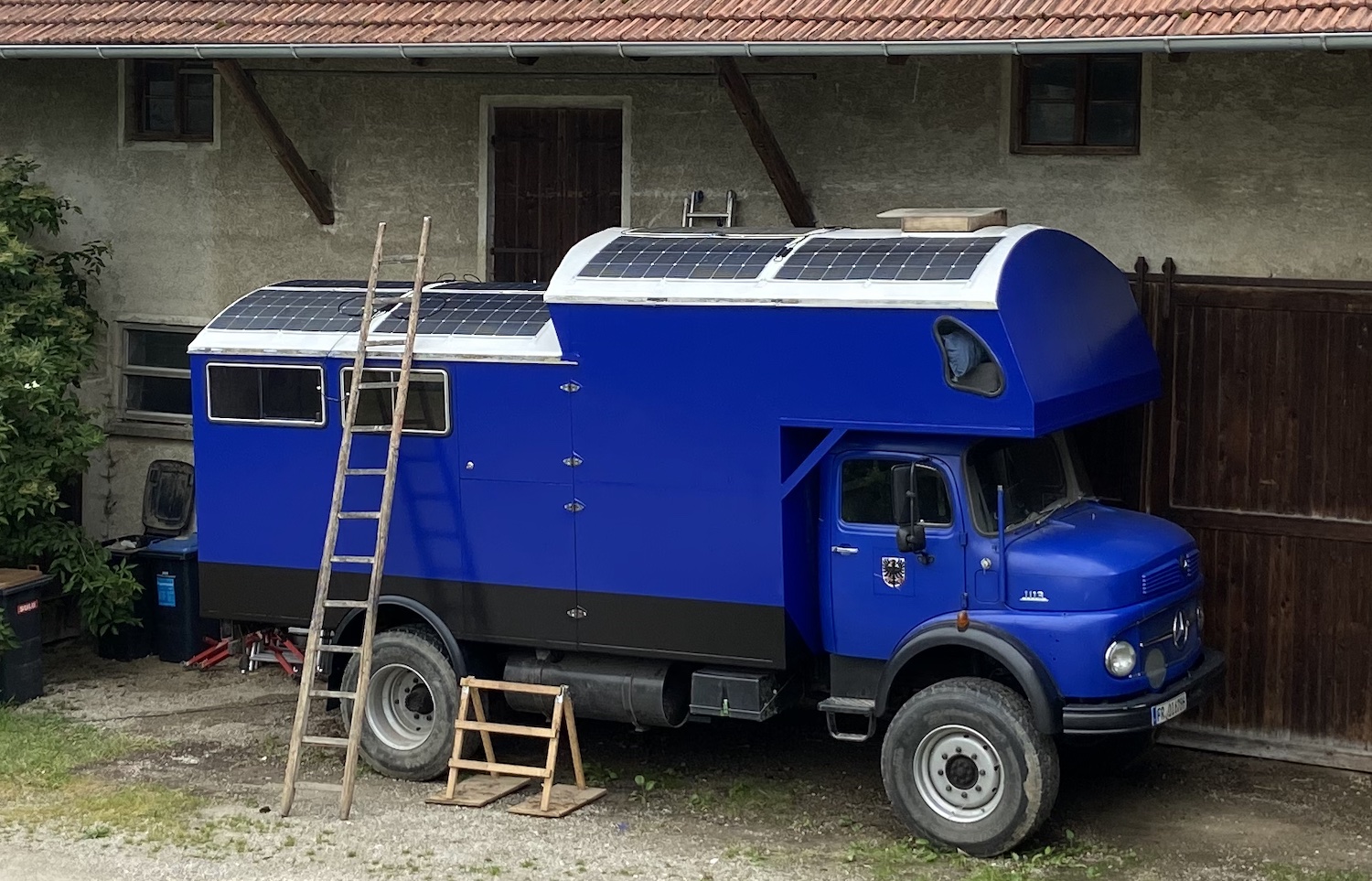The roof was renovated and equipped with custom mounting points for the solar panels. It was about time to install the panels that I had ordered during the winter when the prices and delivery times were still appropriate.
The 500W solar system of my van provided sufficient power from spring to autumn to operate all my electric devices. But when staying in Germany during the winter, I had to give up on some comfort: On an average winter day, the system made only about 300Wh a day, so there was only enough power to run my laptop, the WiFi router and the LED lights. I couldn’t use the boiler, induction cooker or the fridge.
The roof of the truck offered much more space, so I was able to optimize my setup for the winter: the more panels the better. Luckily, I found a manufacturer offering 200W solar panels that nicely matched with the dimensions of the roof: Five on the front roof and six on the back roof, so 2200W in total. This was more than four times of the capacity that I had installed on my Mercedes 508D. 2200W would provide much more flexibility when spending time in the north during the winter.
Installing the panels
Installing the panels on the roof was straight forward. The semi-flexible solar panels nicely aligned with the curved mounting points on the roof.

It didn’t take much time to mount the five panels on the front roof.

The six panels on the back were also mounted quickly.

Once all the panels were installed, I wired everything up. All panels on the front roof were connected in series. So were the panels in the back. Connecting all panels in series would have resulted in a very high voltage. I already had a solar charger that didn’t support the high voltage, so I decided to run two solar chargers in parallel. One for the front roof and one for the back roof. I routed the cables through one of the portholes that were nicely protected from the weather by the overhanging roof.

Nice! I was finally able to autonomously supply my truck with electricity.
